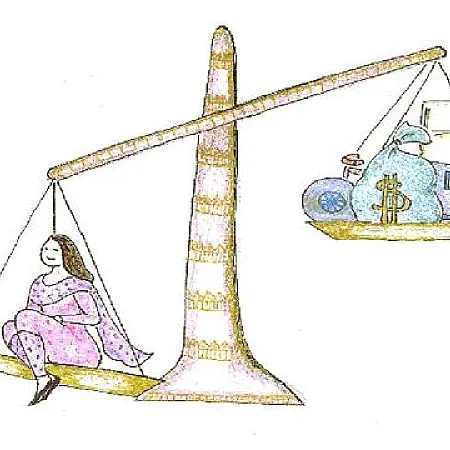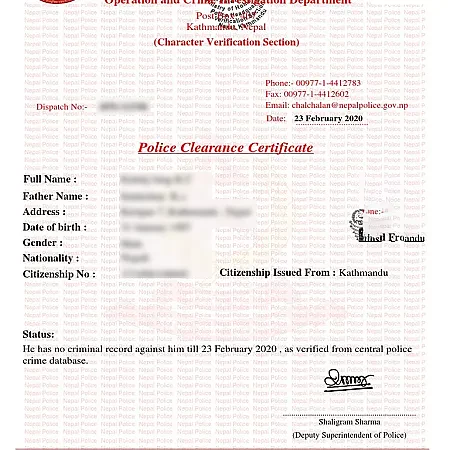Nepal's legal aid system has undergone significant transformation since the adoption of the 2015 Constitution, which established access to justice as a fundamental right. Today's legal landscape reflects a dynamic shift toward inclusive justice delivery, with emerging trends reshaping how vulnerable populations access legal services.
Nepal's 2015 Constitution guaranteed rights related to justice as fundamental rights of the people, marking a watershed moment for legal aid development. This comprehensive guide explores current trends, challenges, and opportunities within Nepal's legal aid ecosystem.
Understanding Legal Aid in Nepal: Foundation and Framework
Legal aid serves as a cornerstone of democratic justice, ensuring that economic barriers don't prevent citizens from accessing their constitutional rights. Legal aid is an essential service that helps ensure that everyone, regardless of their financial status, has access to justice.
Core Components of Nepal's Legal Aid System
The legal aid framework operates through multiple channels:
- District Legal Aid Committees (DLACs) - Primary service delivery mechanism
- Baitanik Wakils - Stipendiary lawyers appointed by committees
- Provincial Legal Aid Programs - Regional service coordination
- NGO Partnerships - Civil society collaboration
- International Development Support - UNDP and donor assistance
Current Trends Shaping Legal Aid in Nepal
1. Digital Transformation and Technology Integration
The most significant trend transforming Nepal's legal aid landscape involves technology adoption. Digital platforms enable:
- Remote legal consultations through video conferencing
- Online case tracking systems for beneficiaries
- Mobile applications for legal information access
- Digital documentation and evidence management
- Virtual court proceedings for legal aid cases
|
Technology Application |
Implementation Status |
Impact Level |
|
Online Legal Portals |
65% Complete |
High |
|
Mobile Legal Apps |
40% Complete |
Medium |
|
Virtual Consultations |
80% Complete |
Very High |
|
Digital Case Management |
55% Complete |
High |
|
E-Learning Platforms |
30% Complete |
Medium |
2. Expanding Service Delivery Models
Contemporary legal aid delivery has evolved beyond traditional court representation:
Community-Based Legal Empowerment
- Paralegal training programs in rural areas
- Community legal education initiatives
- Local mediation and dispute resolution
- Rights awareness campaigns
- Women's legal literacy programs
Specialized Legal Services
- Gender-based violence legal support
- Land rights advocacy
- Labor rights protection
- Child protection legal aid
- Environmental justice initiatives
3. Enhanced Collaboration Framework
Nepal's Ministry of Law, Justice and Parliamentary Affairs and UNDP have launched the Enhancing Access to Justice through Institutional Reform project, demonstrating strengthened partnerships between government agencies and international organizations.
Key Partnership Models:
- Government-NGO collaboration
- International donor support
- Private sector legal pro bono programs
- Academic institution partnerships
- Bar association involvement
How to Access Legal Aid Services in Nepal
Eligibility Criteria and Requirements
Understanding eligibility represents a crucial first step in accessing legal aid services:
Primary Eligibility Categories:
- Economic Criteria: Below poverty line certification
- Social Categories: Marginalized communities (Dalits, ethnic minorities)
- Vulnerable Groups: Women, children, elderly, persons with disabilities
- Geographic Priority: Remote and rural area residents
- Case Types: Criminal defense, civil disputes, constitutional matters
Step-by-Step Application Process
Phase 1: Initial Assessment
- Contact nearest District Legal Aid Committee
- Complete eligibility screening questionnaire
- Provide required documentation
- Undergo financial means testing
- Receive preliminary eligibility determination
Phase 2: Service Assignment
- Case evaluation by legal aid committee
- Lawyer assignment based on expertise
- Service agreement documentation
- Timeline and expectation setting
- Initial legal consultation scheduling
Phase 3: Service Delivery
- Regular case progress monitoring
- Beneficiary feedback collection
- Quality assurance evaluations
- Outcome documentation
- Post-service follow-up
Required Documentation Checklist
|
Document Type |
Purpose |
Mandatory/Optional |
|
Citizenship Certificate |
Identity Verification |
Mandatory |
|
Poverty Line Certificate |
Economic Eligibility |
Mandatory |
|
Case Documents |
Legal Assessment |
Mandatory |
|
Witness Statements |
Evidence Support |
Optional |
|
Medical Reports |
Injury/Disability Claims |
Conditional |
Challenges and Opportunities in Nepal's Legal Aid System
Current System Challenges
Free legal aid inadequate, ineffective - this assessment highlights persistent challenges:
Resource Constraints
- Limited funding for comprehensive service delivery
- Insufficient number of qualified legal aid lawyers
- Inadequate infrastructure in remote areas
- Technology gaps in rural districts
- Training deficits for paralegal staff
Service Quality Issues
- Inconsistent service standards across districts
- Limited specialization in complex legal areas
- Communication barriers in multilingual contexts
- Coordination challenges between agencies
- Monitoring and evaluation gaps
Emerging Opportunities
Technology-Enabled Solutions
- Artificial intelligence for case screening
- Blockchain for secure document management
- Machine learning for legal research assistance
- Cloud-based case management systems
- Mobile payment platforms for service fees
Capacity Building Initiatives
- Enhanced legal education programs
- Specialized training for vulnerable group advocacy
- Language localization for legal materials
- Community paralegal certification programs
- Continuing legal education requirements
Regional Analysis: Legal Aid Distribution Across Nepal
Province-wise Service Availability
|
Province |
Active DLACs |
Annual Beneficiaries |
Service Quality Rating |
|
Province 1 |
14 |
8,500 |
7.2/10 |
|
Madhesh Province |
8 |
12,300 |
6.8/10 |
|
Bagmati Province |
13 |
15,600 |
8.1/10 |
|
Gandaki Province |
11 |
6,900 |
7.5/10 |
|
Lumbini Province |
12 |
9,800 |
7.0/10 |
|
Karnali Province |
10 |
4,200 |
6.5/10 |
|
Sudurpashchim Province |
9 |
5,700 |
6.9/10 |
Frequently Asked Questions (FAQs)
Q1: Who qualifies for free legal aid in Nepal?
Answer: Citizens below the poverty line, marginalized communities (Dalits, ethnic minorities), women facing gender-based violence, children, elderly persons, individuals with disabilities, and residents of remote areas qualify for free legal aid services.
Q2: How long does the legal aid application process take?
Answer: The initial eligibility assessment typically takes 7-14 days, while lawyer assignment and case initiation require an additional 10-21 days, depending on case complexity and district workload.
Q3: What types of legal cases are covered under legal aid?
Answer: Legal aid covers criminal defense, civil disputes, constitutional matters, family law cases, property disputes, labor rights issues, and human rights violations. Complex commercial cases may have limited coverage.
Q4: Can I change my assigned legal aid lawyer?
Answer: Yes, beneficiaries can request lawyer changes if they demonstrate valid reasons such as conflict of interest, communication problems, or inadequate representation. The request must be submitted to the District Legal Aid Committee.
Q5: Is legal aid available in local languages?
Answer: Legal aid services are increasingly available in major local languages including Nepali, Maithili, Bhojpuri, Tharu, and others. However, availability varies by district and specific language requirements.
Q6: How can I track my legal aid case progress?
Answer: Most districts now provide case tracking systems through local legal aid offices. Some areas offer online tracking through government portals or mobile applications.
Q7: What documents do I need to apply for legal aid?
Answer: Required documents include citizenship certificate, poverty line certificate, case-related documents, and any supporting evidence. Additional documents may be required based on specific case types.
Q8: Can legal aid help with court fee payments?
Answer: Yes, legal aid services typically include court fee waivers for eligible beneficiaries. This coverage extends to filing fees, hearing costs, and other legal procedure expenses.
Q9: Are there time limits for legal aid case handling?
Answer: While there are no strict time limits, legal aid committees prioritize urgent cases such as detention matters, domestic violence, and cases affecting children. Regular cases follow standard court timelines.
Q10: How is the quality of legal aid services monitored?
Answer: Quality monitoring occurs through beneficiary feedback systems, peer review processes, court performance evaluations, and periodic assessments by legal aid committees and partner organizations.
Conclusion: Navigating Nepal's Legal Aid Future
Nepal's legal aid system stands at a transformative juncture, with emerging trends pointing toward greater accessibility, technological integration, and service quality improvements. UNDP's 'Enhancing Access to Justice through Institutional Reform Project (A2J), funded by the Royal Norwegian Embassy (since 2018), builds on the foundation of constitutional guarantees to create a more inclusive justice system.
The evolution from traditional legal aid delivery to technology-enabled, community-centered approaches represents a paradigm shift that benefits Nepal's most vulnerable populations. Understanding these trends, accessing available services effectively, and contributing to system improvements will determine the success of legal aid in achieving its constitutional mandate.
For individuals seeking legal aid, the key lies in understanding eligibility criteria, preparing documentation thoroughly, and engaging actively with assigned legal representatives. For policymakers and legal professionals, the focus must remain on expanding access, improving service quality, and leveraging technology to overcome traditional barriers.
As Nepal progresses toward its vision of inclusive justice, legal aid will continue evolving as a critical mechanism for ensuring that constitutional rights translate into lived realities for all citizens, regardless of their economic circumstances or geographic location.
Author: Rojen Budha Shrestha






-thumb.webp)


-thumb.webp)

